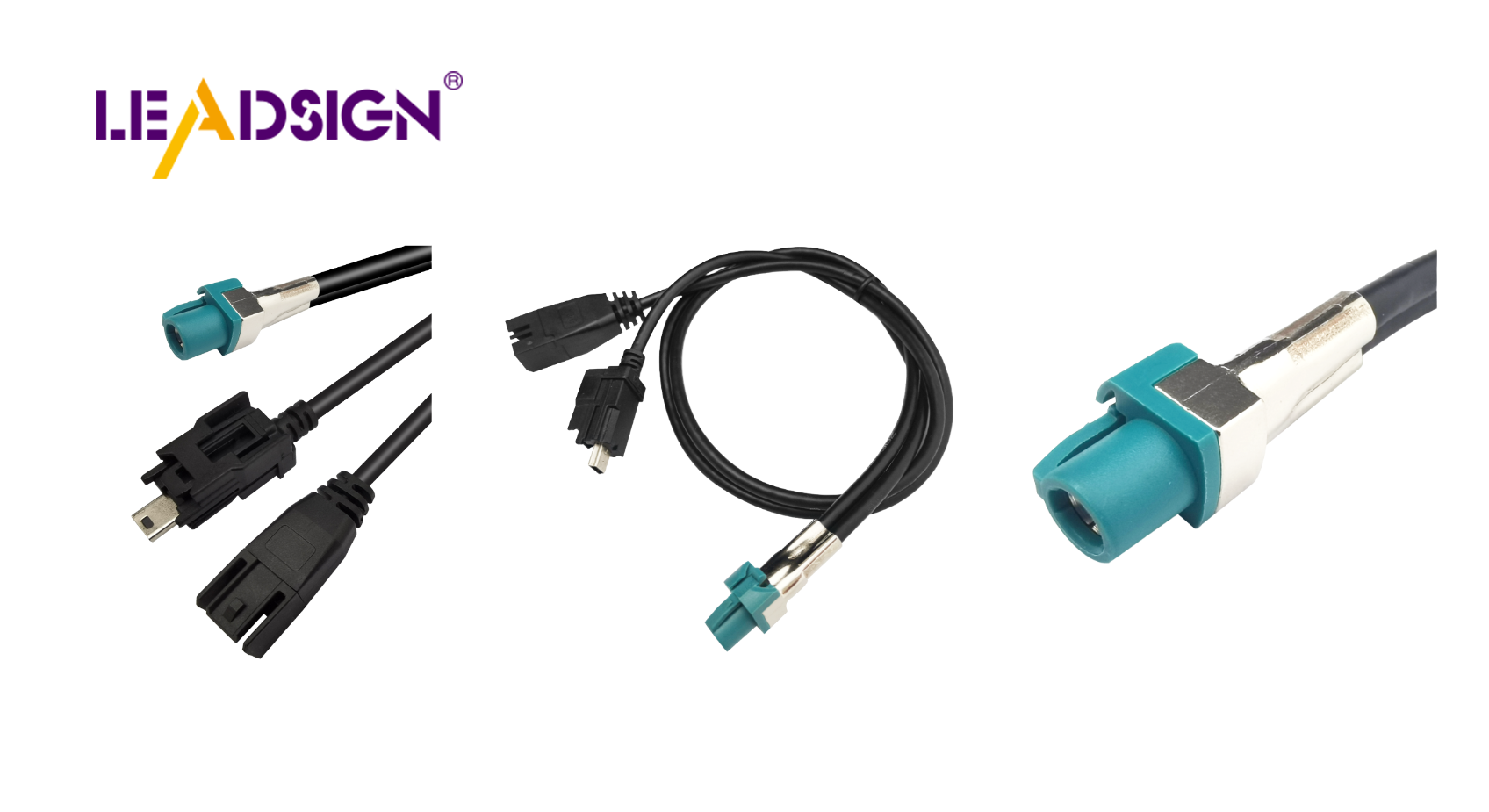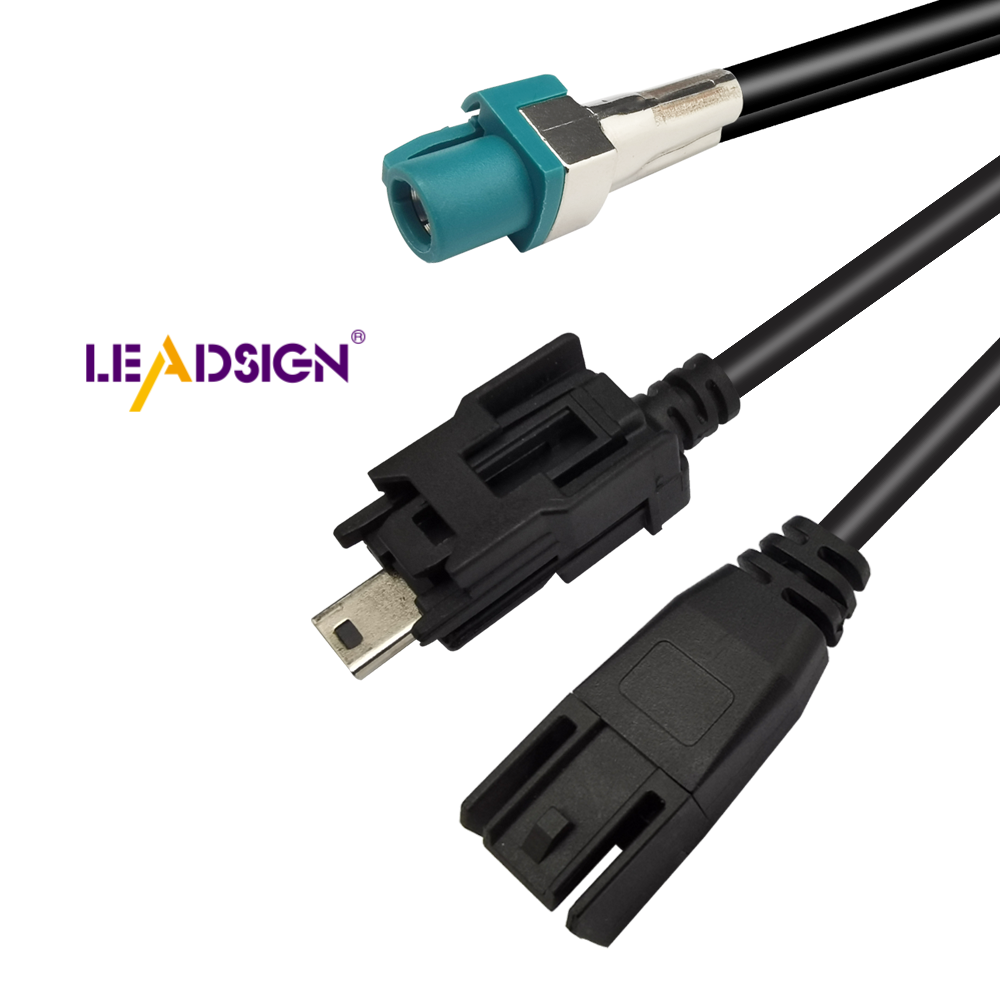Understanding Automotive Wiring Connector Types

Automotive electrical connectors are crucial components in modern vehicles. They facilitate seamless connections between various electric systems, enhancing the overall performance of the car. These connectors are responsible for transmitting both power and information, which is vital for the efficient operation of automotive systems. By maintaining robust connections, they prevent electrical issues and ensure safety. Understanding the different automotive electrical connectors types is essential for effective car maintenance and repair.
Overview of Automotive Electrical Connectors Types
Definition and Purpose
What are Wiring Connectors?
Wiring connectors are key parts in car systems. They link circuits, letting electricity move smoothly in a vehicle. These connectors have different shapes and sizes for special jobs. They keep connections strong, helping the car's electrical system work well.
Why are they crucial in automotive systems?
Cars need wiring connectors to work right. They stop electrical problems by making sure connections are safe. Without them, cars would break down often and be dangerous. Wiring connectors also make fixing cars easier because they let workers unplug and plug circuits easily. They carry power and information, so they are very important in today's cars.
Basic Components of Connectors
Pins and Sockets
Pins and sockets are the main parts of any connector. Metal pins fit into matching sockets to make an electric link. This setup makes sure electricity flows well. Good pins and sockets mean fewer loose links, stopping electrical problems.
Housing and Insulation
Housing and insulation guard the inside parts of connectors. The housing is usually tough plastic or metal that protects from harm. It keeps out dirt and water too. Insulation stops electricity from going where it shouldn't, lowering short circuit risks, keeping car systems safe.
Types of automotive electrical connectors

Blade Connectors
Characteristics and Uses
Blade connectors, also known as spade connectors, have a flat metal piece. This shape lets them fit easily into a matching slot. They make sure electricity flows well and stay connected securely. Blade connectors come in different sizes for various wire thicknesses. They are used in low-voltage places, perfect for automotive electrical systems.
Common Applications in Vehicles
In cars, blade connectors link wires to things like headlights and tail lights. They are also used in fuse boxes and relay panels. Because they are easy to use and reliable, they are popular in many car electrical systems.
Ring and Spade Connectors
Differences between Ring and Spade
Ring and spade connectors both attach wires to a terminal. But they look different. Ring connectors make a full circle; you must remove the screw to use them. Spade connectors have an open end that slides under the screw without taking it out. This makes spade connectors faster to install.
Installation and Usage Tips
When using ring connectors, tighten the screw well to keep connections firm. For spade connectors, line up the open end with the screw correctly. Both types need to be crimped tightly onto wires for strong links. These are important for battery terminals and grounding points in cars.
Butt Connectors
When to Use Butt Connectors
Butt connectors join two wires together at their ends. They work great for fixing or making wires longer in cars. If a wire needs fixing or extending, butt connectors offer an easy fix.
Advantages and Limitations
Butt connectors give a strong connection with insulation, lowering short circuit risks. They're simple to use with a crimping tool, good for experts or DIYers alike. But they're not best for areas with lots of shaking because movement can loosen them over time. Still, butt connectors help repair wires efficiently in many car electrical systems.
Special Connectors
Weatherproof Connectors
Weatherproof connectors are important for car electrical systems. They keep connections safe from rain, snow, and dust. These connectors have seals that stop water and dirt from getting in. By staying dry inside, they work well in any weather.
Makers use strong stuff to build weatherproof connectors. Rubber or silicone seals block water and dirt well. The outside is tough plastic or metal to stop damage. These parts make them great for outdoor car parts like lights and sensors.
High-Temperature Connectors
High-temperature connectors handle a lot of heat, so they're key in some car spots. They stay strong even when it's really hot. This is needed near engines or exhausts where it gets super hot.
These connectors are made with heat-proof materials like special plastics or ceramics. They often have coatings that stop heat harm. Using high-temp connectors helps keep car wires safe and steady, even in tough places.
Picking the Right Connector
Choosing the right connector is very important. It keeps a car's electrical system safe and working well. Knowing different types of connectors helps you pick the best one. This part will show what to think about and mistakes to avoid when picking connectors.
Things to Think About
Electrical Needs
First, check what electricity is needed. Different connectors handle different power levels. Connectors for high power need to manage more electricity. Match the connector's details with the car's needs for best results.
Environment Conditions
The place where connectors are used matters a lot. Some connectors can handle tough conditions like heat or wetness. Weatherproof ones are good outside because they block water and dirt. High-temp ones are needed near hot engines. Checking these conditions helps connectors last longer.
Mistakes Not to Make
Forgetting Compatibility
Don't forget about compatibility when choosing connectors. Not all types fit together well. Each has special features that must match the car's wiring system. Wrong matches can cause bad connections and problems.
Ignoring Maker Rules
Follow maker rules for using their connectors carefully. They give instructions on how to install them right, tools needed, and care tips. Ignoring these can cause wrong setups and damage systems.
By thinking about these things and avoiding mistakes, you can choose the right automotive electrical connectors types easily, making cars work better and safer.
Practical Uses and Common Questions
Real-Life Examples
Choosing Connectors in Today's Cars
Picking the right connectors is key in new cars. Engineers think about many things for best results. They use weatherproof connectors for outside lights to stop water damage. Near engines, they pick high-temp connectors to handle heat. Right choices make cars safer and more reliable.
Fixing Usual Connector Problems
Common connector problems are loose links and rust. Loose links happen if not installed right. Make sure connectors fit tight to avoid this. Rust happens when water gets inside connectors. Check them often to spot rust early. Clean them and use coatings to stop more harm. Fixing these fast keeps the car's electrical system working well.
Commonly Asked Questions
How do you know connector types?
To know connector types, look at their shape and size. Blade ones are flat metal; ring ones are circles. Spade ones have an open end. Each type has a job it does best. Check car manuals for help; they have pictures and info on connector types used in the car.
What are good maintenance tips?
Keeping connectors in good shape means checking them often and cleaning them up. Look for any wear or damage signs. Use the right cleaners to remove dirt and rust from connectors. Dielectric grease helps keep moisture away from them too. Crimping well makes sure connections stay strong, following maker rules keeps them working longer, making cars run better.
Picking the right car connectors is very important. They keep the car safe and working well. Connectors help electrical systems work smoothly, stopping problems. When choosing, think about power needs and where they will be used. This makes the car's electrical parts last longer and work better. Knowing different connector types helps people choose wisely. This leads to a car that runs its best.
See Also
Exploring HSD Connectors in the Automotive Sector
Significance of Fakra Connectors in Contemporary Cars
Navigating Ford Fakra Connectors

